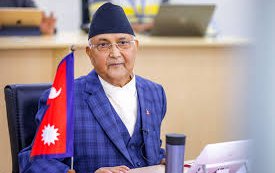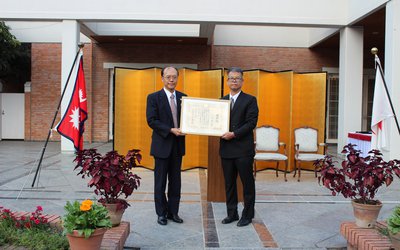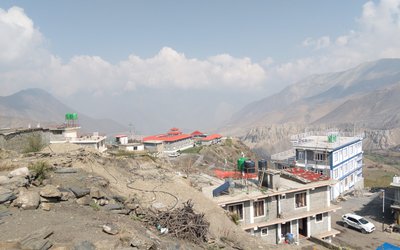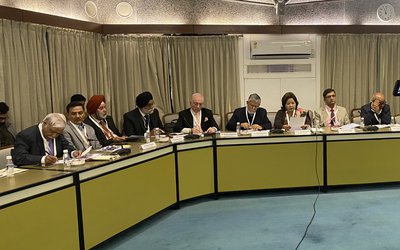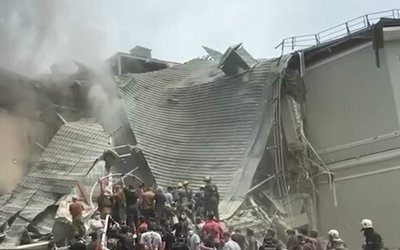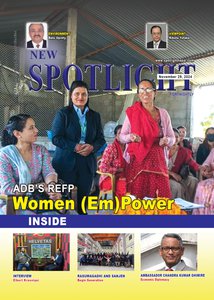
The COVID-19 pandemic led to a temporary closure of educational institutions to contain the spread of the virus.As a response to this, countries all over the world shifted from a physical learning environment to a virtual learning space to keep the educational activities going. While many countries easily adjusted to the shift from physical to virtual learning, a country like Nepal faced a lot of challenges due to a lack of crisis preparedness capacity.
To meet the educational demand of students during the lockdown, the Government of Nepal launched its first digital portal Sikai Chautari that contained a curriculum in both Nepali and English from grade 1 to grade 10. The system of online education had never been tried at this scale in Nepal, but the digital portal claimed to be effective for students to spend quality time in learning school-based curriculum during the lockdown. Although the online portal proclaimed to be student-friendly, and that it could be accessed by everyone from any corner of Nepal, poor data connectivity, lack of access to laptops and smartphones, power issues, and lack of parental education acted as major impediments to access the online portal resulting in education deprivation for many students in the rural areas of the country. While educational institutions in urban and even semi-urban locations moved ahead with online classes, those students who went to state-owned schools, and low-cost private schools were deprived of online classes, giving rise to uneven opportunities amongst students.
Learning through online platform still pose a serious challenge in Nepal. Unlike private schools located in urban and semi-urban areas, state-run schools, and low-cost private schools are not equipped to run online learning. According to Nepal's education ministry, at least 8.5 million students are enrolled in primary schools or higher education, but the authorities are struggling to make plans on how the students can continue their education through online mediums. The Flash report 2019-20, stated that currently only 13% of schools have internet access, and the MICS report, 2020 stated 45% of students are unlikely to regularly access online or other media. Similarly, the recent Child and Family Tracker survey by UNICEF Nepal showed that more than two-thirds of schoolchildren are deprived of distance learning, and only three out of 10 children have access to television, radio and internet-based learning platforms.
As an immediate emergency action to COVID-19, the Ministry of Education, Science & Technology had introduced an Emergency Action Plan for School Education last year. This emergency plan included the development of temporary learning facilitation centers and converting them into free Wi-Fi zones as an action point. This was aimed to begin from October/November 2020, but, the government has not yet taken a single step to execute this plan. The action point stated by the government was perceived to be an ambitious statement made without any proper study. Nepal Economic Forum (2020) also claimed that the GoN failed to build the necessary infrastructure for virtual learning during the COVID-19 period.
Given the limited infrastructure and resources, it is evident that Nepal is slow when it comes to embracing technological changes. While neighboring India took a swift advancement in the digital learning world, Nepal gained popularity in digital learning only after the pandemic. Nepal has to learn from initiatives made by India to increase its e-learning reach and update its laws and policies to promote it accordingly. In India, rural schools and colleges easily adapted to online learning, thanks to its new era of digital literacy, and the launch of the ‘National BroadBand Mission’, which promises bandwidth access to all villages by the year 2020. The survey conducted by the Times of India stated that there is a growing acceptance of online education across various rural areas in India, and it already has the second-highest number of internet which is the second-largest internet marker across the world and aims to reach 624 million active users by February 2021. Furthermore, the government of India also started the initiative “Pradhan Mantri Gramin Digital Saksharta Abhiyaan (PMGDISHA)’, which aims to reach out to 40% of India’s rural population and offer free digital literacy courses for citizens between the ages of 14 to 60.
WHO recently pointed out the uncertainty about the length of the pandemic. Hence, it is crucial that the government and educational institutes be prepared to take digital education, not as a temporary solution, but to look for a planned solution to deliver it correctly. For this, it has to increase the bandwidth for good internet access, strengthen capacity-building measures in rural areas including mobilizing school teachers, as well as parents in utilizing technology, for effective learning of students in rural areas.
Ashika is a Sociology graduate and is a development professional

Ashika Sharma
Ashika is a Sociology graduate and is a development professional
- Student Assessment: Time To Put On A Thinking Cap!
- Aug 06, 2021



